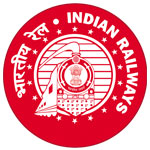- Home
- About Us
- Courses
- NSHM Business School
- BBA (Bachelor of Business Administration)
- BBA – Hospital Management
- BBA – Global Business
- BBA – Sports Management
- BBA – Accountancy, Taxation & Auditing
- BBA – Accountancy, Taxation and Auditing + BSE Certification
- BBA – Banking & Financial Services
- MBA (Master of Business Administration)
- Executive MBA
- MHA (Master of Hospital Administration)
- NSHM Institute of Health Sciences
- Bachelor of Pharmacy
- Bachelor of Pharmacy (Lateral)
- Bachelor of Optometry
- B.Sc. – Psychology
- B.Sc. – Dietetics and Nutrition
- B.Sc. – Medical Lab Technology
- B.Sc. – Radiology & Medical Imaging Technology
- B.Sc. – Critical Care Technology
- B.Sc. – Yoga
- Master of Optometry
- Master of Optometry (BL)
- Master of Pharmacy – Pharmacology
- Master of Pharmacy – Pharmaceutics
- Master of Public Health
- Master of Public Health (BL)
- M.Sc. – Clinical Psychology
- M.Sc. – Dietetics and Nutrition
- M.Sc. – Medical Lab Technology
- M.Sc. – Radiology & Imaging Technology
- M.Sc. – Yoga
- M.Sc. – Yoga (BL)
- NSHM Design School
- NSHM Institute of Computing & Analytics
- NSHM Institute of Engineering & Technology
- B. Tech. – Mechanical Engineering
- B. Tech. – Mechanical Engineering (Lateral)
- B. Tech. in Civil Engineering
- B. Tech. – Civil Engineering (Lateral)
- B. Tech. – Computer Science Engineering
- B. Tech. – Computer Science Engineering (Lateral)
- B. Tech. – Electronics & Communication Engineering
- B. Tech. – Electronics & Communication Engineering (Lateral)
- B. Tech. – Artificial Intelligence and Machine Learning
- B. Tech. – Artificial Intelligence and Machine Learning (Lateral)
- B. Tech. – Electrical Engineering
- B. Tech. – Electrical Engineering (Lateral)
- B. Tech. – Data Science
- B. Tech. – Data Science (Lateral)
- NSHM Institute of Hotel & Tourism Management
- BBA – Aviation Hospitality Services and Management
- BBA – Travel & Tourism Management
- B.Sc. – Culinary Science
- Bachelor of Hotel Management & Catering Technology
- B.Sc. – Hospitality & Hotel Administration
- Master of Tourism & Travel Management
- Master of Tourism & Travel Management (BL)
- M.Sc. – Hospitality Management
- M.Sc. – Hospitality Management (BL)
- NSHM Institute of Nursing
- NSHM Media School
- NSHM Institute of Pharmaceutical Technology
- NSHM Business School
- Schools & Campuses
- Beyond Academics
- Admissions
- News & Events
- Contact Us
Overview

Witnessing its tremendous potential to rule the World of Technology, NSHM School of Engineering & Technology offers a new specialization – B.Tech. in Data Science. It is a 4-year undergraduate programme that trains students to learn about various tools and techniques of machine learning, applied statistics, mathematics and become skilled data scientists.
Data Science is taking centre stage in all areas—business and industry, public policy, the life sciences, natural sciences, humanities, and social sciences. This field has grown rapidly in recent years as a result of the increasing availability of large data sets and the opportunities and challenges that they present. Big Data Analytics help organizations harness their data and use it to identify new opportunities. It leads to smarter business moves, more efficient operations, higher profits and more satisfied customers. NSHM is now among the few Data Science colleges in West Bengal offering a B. Tech degree after witnessing its big impact on industry. In B. Tech. in Data science programme, one deals with both structured and unstructured data as well as algorithms that involve predictive analytics.
Programme Education Objective
- Prepare the students with knowledge and skills of computing and data environments, object oriented technology, data structure & algorithm, Operating systems, programming, problem-solving, statistics and mathematics, data analysis, analytics, data mining, web mining, warehousing, soft computing, AI/ML, NLP, deep learning, Block chain, and other related and advanced data science and human-computer interactions for superior vocations and careers as data scientist, data engineer, data analyst, business analyst, big data analyst, security head, developer, entrepreneur, consultant, chief data officer, etc. in a diverse and multi-disciplinary settings in national and international organizations.
- Enable them to adapt to modern and emerging technologies through lifelong learning and practice in an ethical and just manner.
Career Opportunities
When people were being laid off due to Covid-19 pandemic, around 93,000 jobs in Data Science were vacant at the end of August 2020 in India. Demand for skilled professionals in Data Science and Analytics is increasing not just in India but across the world.
Here are some of the roles a Data Science professional can look forward to in major organizations:
- Data Scientist
- Data Administrator
- Big Data Analyst
- Data Engineer
- Statistician
- Data Architect
- Business Intelligence (BI) Developer
- Data Engineer
- Big Data Scientist
- Software Developer
Programme Structure
Core Curriculum
Programming Languages
Programming for Problem Solving
programming system, structure, numerical method problems, function, pointers, array structures and files handing process,compiler, interpreter, shell, problem solving using C and/or R and/or python
Object Oriented Tecghnology
OOPS, object oriented programming language and apply programming conept to create class & its objects for solving inheritance,polymorphism,applets, swing programming etc.
Design Analysis and algorithms
Data Structure & Algorithm
computational efficiency of the principal algorithms – sorting, searching, hashing, Identify appropriate data structure & algorithmic methods
Design & Analysis of Algorithms
Analyze the asymptotic performance of algorithms, Synthesize efficient algorithms in common engineering design situations
Database Management
Analyze database requirements, determine relationships of entities, logical design of the database, DBMS/RDBMS and big data modeling and management.
Statistics for Data Science
Statistics for Data Science
statistical analysis of data, build and assess data-based models, execute statistical analyses with professional statistical software
Linear Algebra
matrix analysis, numerical methods of linear algebra, elements of functional analysis, mathematical statistics, modern machine learning and data analysis.
Data Analysis and Visualization
For presenting data to others, aspireing to be a business analyst or data scientist then the most effective with visualization tools used is tableu
Business Analytics
For presenting data from the point of view of a business analyst
Big Data Analysis
Learners are expected to apply principles of statistical analytics to solve problems and inform decision making.
Data mining
Data Base Management System
To design and build a simple database system and demonstrate competence with the fundamental tasks involved with modeling, designing, and implementing a DBMS.
Data Mining
To analyze data, choose relevant models and algorithms for espective applications and evaluate different data mining techniques like classification, prediction, clustering and association rule mining
Data Warehousing
“Design data warehouse with dimensional modelling and apply
OLAP operations – Relational, Multidimentional, Hybrid”
Web Mining
acquire statistical techniques to analyze complex information and social networks
Artificial Intelligence & Human computer Interaction
AI/ML
introduction to artificial intelligence, machine learning, current trends and characterization of knowledge-based systems, Search, knowledge representation schemes, production systems, and expert systems
Soft Computing
Fundamentals of Soft Computing, Artificial Neural Networks, Fuzzy Logic and Genetic Algorithms, optimization associated with neural network learning
Neural Network and Deep Learning
Fundamentals of deep learning, computer learning model, perform classification tasks directly from images, text, or sound, Model training, testing, large set of labeled data, and multiple layers in neural network architectures
Natural Language Processing
Natural Language Processing (NLP) develops statistical techniques and algorithms to automatically process natural languages (such as English). It includes a number of AI areas, such as text understanding and summarization, machine translation, and sentiment analysis.
Human Computer Interaction
HCI design principles, standards and guidelines, analyze and identify user models, user support, socio-organizational issues, stakeholder requirements of HCI systems.
Distributed Systems
Computer Organization and Architecture
computer organization & parallel architecture , interconnected networks, distributed system architecture, Cloud architecture and computing
Operating System
mechanisms of OS, Network OS, Distributed OS, handle processes and threads, memory magagement, process management, exception handling
Block Chain Technology
individual components of the Bitcoin protocol, whole system work: transactions, script, blocks, and the peer-to-peer network
Fee Structure
Fee Structure as per latest Govt notification 466-Edn-(T)/10M-04/2004(Part IV) dated 16.10.2023
| Sem 3 | Sem 4 | Sem 5 | Sem 6 | Sem 7 | Sem 8 | TOTAL | |
| AY 23-24 | AY 24-25 | AY 25-26 | AY 23-26 | ||||
| Admission Fee(One-Time) | 10000 | ||||||
| Tuition Fee | 50000 | 50000 | 50000 | 50000 | 50000 | 50000 | |
| Development Fee | 7500 | 7500 | 7500 | 7500 | 7500 | 7500 | |
| Lib-cum-Book-Bank Fee | 4500 | 0 | 0 | 0 | 0 | 0 | |
| Student Welfare, Sports & Games Fee | 500 | 500 | 500 | 500 | 500 | 500 | |
| Alumni Membership Fee | 0 | 0 | 0 | 0 | 0 | 5000 | |
Total fee excluding University charges |
72500 |
58000 |
58000 |
58000 |
58000 |
63000 |
367500 |
Programme Type - UG
Duration - 3 or 4 years
Minimum Eligibility - 10+2 passed in Science stream. Qualifying entry requirement: WBJEE and JEE (Main)
Degree Awarded By -




































